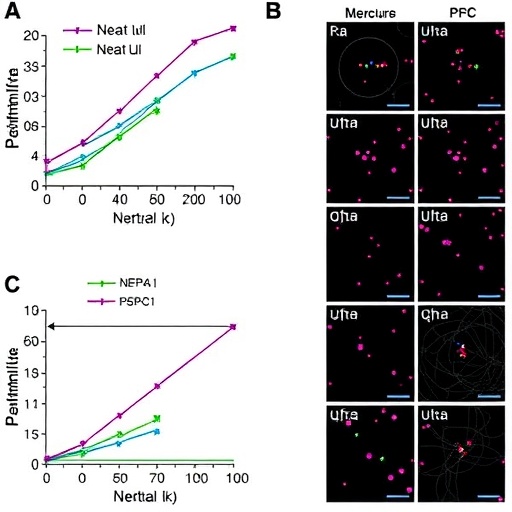In a groundbreaking study published in BMC Nursing, researchers S.H. Alahmedi and A.M. Alodhialah delve into the robust HIRAID emergency nursing framework and its implications for both nursing practice and patient outcomes. Conducted within Saudi Arabia’s rapidly evolving healthcare landscape, this cross-sectional analysis lays the foundation for a new understanding of how structured nursing interventions can influence care delivery in high-stress environments, like emergency departments.
The HIRAID framework, which stands for Hierarchical Immediate Rapid Assessment and Intervention in Emergencies, offers a strategic approach for trained nurses to assess and address patient needs efficiently. By categorizing patients based on the severity of their conditions, this model aims to prioritize care delivery during emergencies, which is crucial when every second counts in saving lives. The necessity for such frameworks has been underscored by the increasing demands placed on emergency services worldwide, as hospitals face surges in patient volumes, particularly in the aftermath of crises such as pandemics.
Alahmedi and Alodhialah’s research, involving a comprehensive survey of nursing staff across various emergency rooms in Saudi Arabia, reveals significant insights into the implementation and efficacy of the HIRAID framework. Key findings indicate that the framework not only enhances the efficiency of care provided but also promotes a collaborative environment among nursing staff. The study illustrates how nurses mediate patient care pathways effectively, ensuring that immediate medical needs are promptly identified and addressed.
One of the most compelling aspects of the study lies in its dual focus on nurse and patient outcomes. The researchers meticulously documented the experiences and perspectives of the nurses, shedding light on their sentiments and the challenges they face while implementing HIRAID strategies. The nurses reported feeling more empowered and equipped in their decision-making processes. This empowerment is crucial, as it translates to better patient outcomes, illustrating the interconnectedness of nurse well-being and patient care.
Moreover, patient outcomes reported in the study demonstrate a marked improvement in satisfaction levels. Utilizing the HIRAID framework allowed for faster assessments and interventions, reducing wait times considerably. Alahmedi and Alodhialah note that patients experienced a more streamlined process, which correlated directly with higher satisfaction scores. This highlights the importance of strategic frameworks not just for operational efficiency but also for enhancing the patient experience, an increasingly critical measure of healthcare quality.
In the context of global nursing practices, this research adds to the growing body of literature advocating for standardized frameworks in emergency care settings. The positive results from the HIRAID implementation serve as a call to action for healthcare systems everywhere to adopt similar structured approaches. Given the unpredictable nature of emergency care, the establishment of such frameworks could be instrumental in averting delays in critical care.
Interestingly, the study did not shy away from addressing systemic challenges encountered during the research. The authors pointed out barriers to the successful integration of the HIRAID framework into daily workflows, including insufficient staff training and inconsistent policy adherence in some facilities. Nevertheless, these hurdles were not enough to overshadow the framework’s benefits, suggesting that with adequate training and support, the framework can be fully utilized to its potential.
Another pivotal aspect highlighted by the study is the role of continuous education and professional development for nurses. The authors emphasize that consistent training in emergency protocols reinforces the implementation of the HIRAID framework and encourages nurses to engage actively with these best practices. The feedback from nursing participants in the study suggests that ongoing education greatly enriches their capacity to operate within the HIRAID model effectively.
Additionally, Alahmedi and Alodhialah foresee a broader applicability for the HIRAID framework beyond just emergency nursing. The principles underlying the model could potentially inform practices across various specialties, including intensive care and surgical units, where rapid assessments and interventions are equally crucial. This adaptability points to a future where frameworks like HIRAID reshape the paradigms of nursing practice on a more extensive scale.
The implications of this research extend into policy-making spheres as well. The findings underscore the necessity for healthcare authorities to recognize the importance of structured frameworks and establish policies that facilitate their adoption. As the healthcare landscape continues to evolve, aligning nurse training, hospital protocols, and policy decisions with evidence-based models like HIRAID will be essential for improving care outcomes on both the operational and patient satisfaction fronts.
As health systems worldwide grapple with increasing patient loads and complex cases, the work of Alahmedi and Alodhialah serves as a beacon of possibility for better outcomes through systematic intervention strategies. Their comprehensive approach ensures that the music of effective patient care plays on in emergency settings, promoting not only the well-being of patients but also that of the dedicated nursing professionals who care for them.
In summary, the study led by S.H. Alahmedi and A.M. Alodhialah represents a significant step forward in emergency nursing practices. By spotlighting the impact of the HIRAID framework on both nurse efficiency and patient satisfaction, it reinforces the importance of structured assessment and intervention approaches. Their findings pave the way for transformative changes that could redefine how emergency care is delivered, creating a more responsive and effective system for all stakeholders involved.
As we look to the future of emergency nursing and healthcare delivery, the work of these researchers reminds us that through innovative frameworks, targeted training, and systematic implementation, we can navigate the challenges of patient care more effectively, fostering an environment that prioritizes both nurse and patient well-being in times of crisis.
Subject of Research: The impact of the HIRAID emergency nursing framework on nurse and patient outcomes in Saudi Arabia.
Article Title: Impact of the HIRAID emergency nursing framework on nurse and patient outcomes: a cross-sectional study in Saudi Arabia.
Article References:
Alahmedi, S.H., Alodhialah, A.M. Impact of the HIRAID emergency nursing framework on nurse and patient outcomes: a cross-sectional study in Saudi Arabia.
BMC Nurs 24, 1208 (2025). https://doi.org/10.1186/s12912-025-03866-4
Image Credits: AI Generated
DOI: 10.1186/s12912-025-03866-4
Keywords: HIRAID framework, emergency nursing, nurse outcomes, patient outcomes, Saudi Arabia, healthcare delivery.
Tags: cross-sectional nursing researchefficient patient assessment techniquesemergency department care deliveryenhancing emergency nursing efficiencyhealthcare challenges in Saudi Arabiahigh-stress nursing environmentsHIRAID emergency nursing frameworknurse patient outcomes in emergenciesnursing practice improvementspandemic response in healthcareprioritizing patient carestructured nursing interventions





